The pads also need to be replaced when the pads are oily, have deep grooves and chips on them, or if the pads peel off from the base of the pads.
The minimum allowable thickness of the overlays is 0.5 mm.
The maximum allowable drum inner diameter is 201 mm.
The brake pads of the rear wheels must be replaced only as a set - all four pads.
Replacing only one brake pad can cause the vehicle to pull to the side when braking.
We show the replacement of pads on the left rear wheel.
The brake pads of the right rear wheel are replaced in the same way.
We remove the wheel.
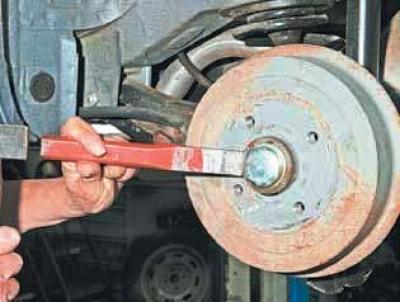
With a chisel and hammer..
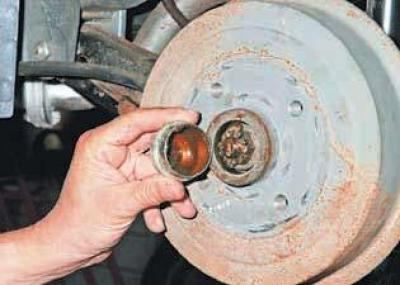
... we press out the protective cap of the hub bearing.
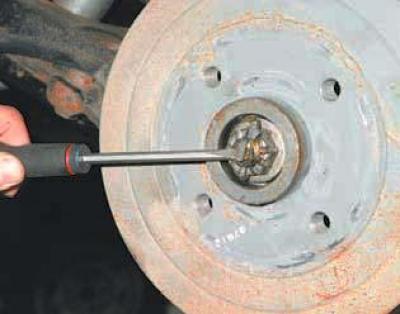
We straighten the cotter pin with a screwdriver..
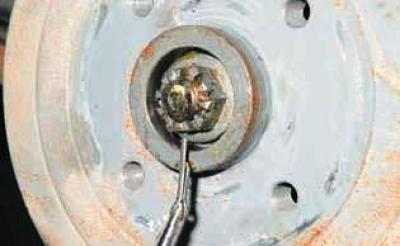
... and with pliers we take it out of the trunnion hole.
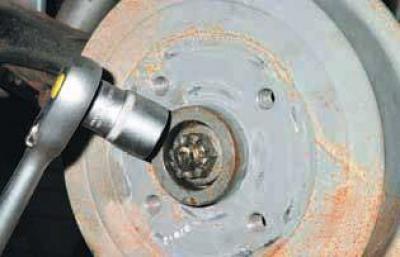
Using the "24" head, unscrew the castellated nut of the hub bearing.
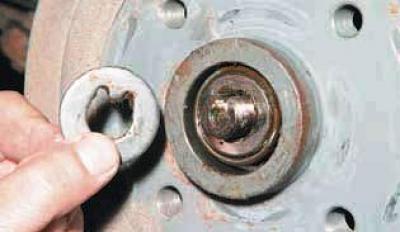
Remove the lock washer.
Before removing the brake drum, lower the parking brake lever all the way - the car must be disengaged.
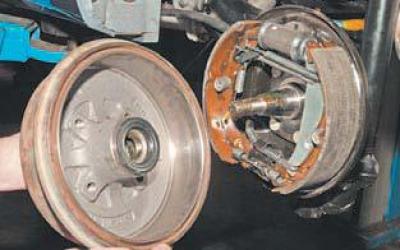
Remove the brake drum assembly with the bearing.
Do not depress the brake pedal after removing the brake drum, as the pistons may completely come out of the wheel cylinder.
We clean the parts of the brake mechanism from contamination.
Do not use petrol or diesel fuel to clean brake parts.
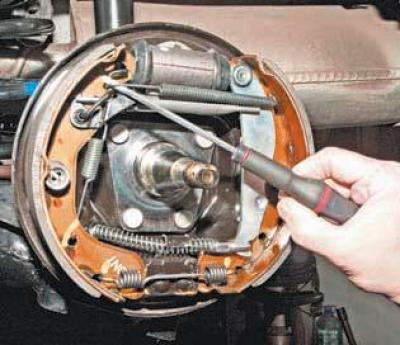
Using a screwdriver, disconnect the front end of the upper coupling spring from the shackle of the gap adjuster lever and remove the spring.
We remove the upper stops of the brake pads from the pistons of the wheel cylinder.
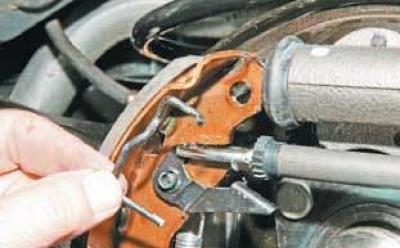
Remove the clearance adjuster arm.
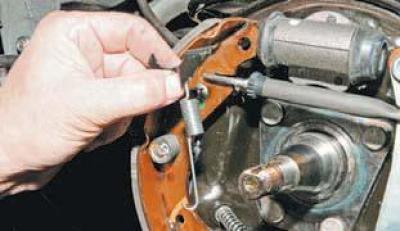
We remove the lever of the gap adjuster together with the spring.
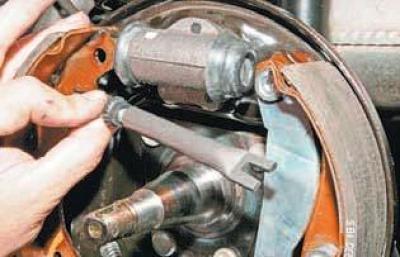
We remove the spacer bar assembly.
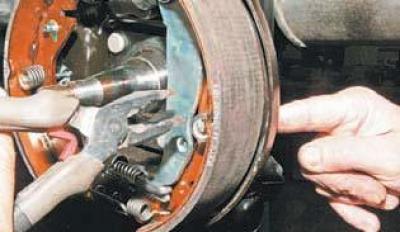
With pliers we turn the cup of the spring of the support column of the block until the groove in the cup is aligned with the shank of the column.
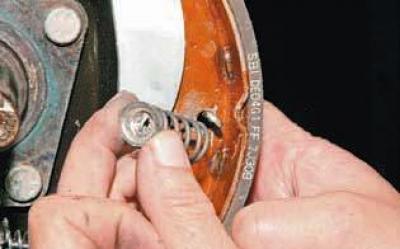
We remove the cup with the spring and take out the support column from the hole in the brake shield.
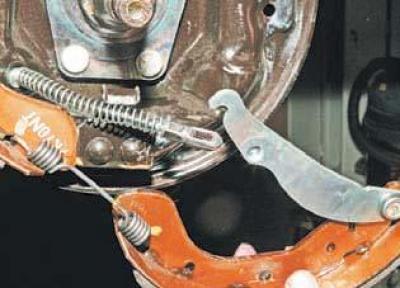
We disconnect the tip of the parking brake cable from the drive lever and, having disconnected the end of the lower coupling spring from the shoe, remove the rear shoe with the lever assembly.
Remove the bottom tension spring.
We remove the cup with the spring of the support strut of the front pad in the same way as the rear..
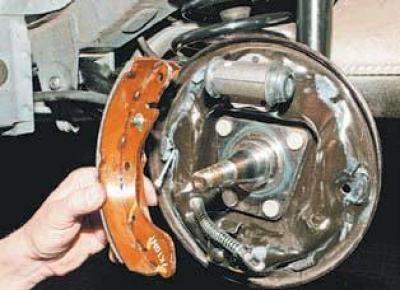
... and remove the front block.
We check the technical condition of the parts and clean them.
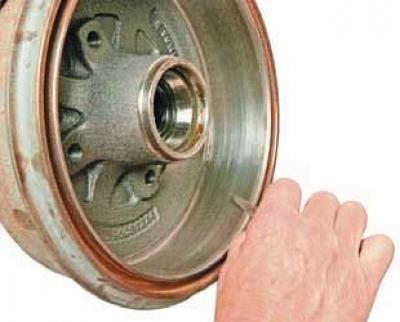
If a shoulder has formed on the inner diameter of the brake drum...... remove it with a scraper.
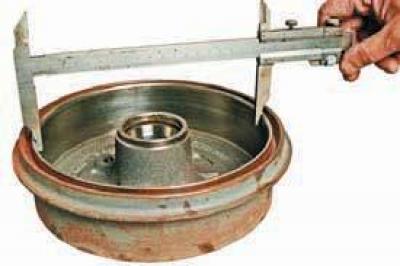
With a caliper we measure the inner diameter of the brake drum, the value of which should not be more than 201 mm.
Before installing new pads, clean the threads of the spacer tip and ratchet nut and apply a thin layer of grease to the threads.
Install new rear brake pads in reverse order.
Note…
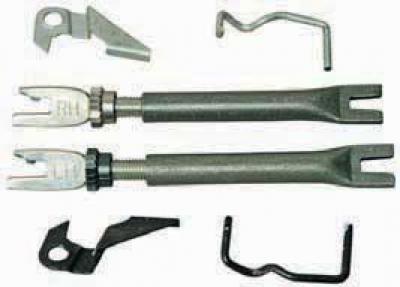
... that the ratchet nut of the spacer bar, the earring and the adjuster lever of the right brake mechanism are silver, and the left mechanism is black.
The threaded tip of the spacer bar is marked: RH - for the right mechanism; LH - for the left mechanism.
Before installing new pads, reduce the length of the spacer bar by screwing the ratchet nut all the way on the threaded end.
This must be done in order to install the brake drum.
After installing the brake drum, tighten the rear wheel bearing nut and adjust the bearings (see Rear wheel bearing adjustment).
Adjust the position of the brake pads.
To do this, press the brake pedal 10-15 times.
At the same time, clicks will be heard in the brake mechanisms of the rear wheels from the operation of the mechanism for automatically adjusting the gaps between the pads and the brake drums.
When the clicks stop, the adjustment is complete.
Adjusting the parking brake (see Parking brake adjustment).
We check the ease of rotation of the suspended wheels with the parking brake lever fully lowered.
We check the fluid level in the tank and, if necessary, bring it to normal.
